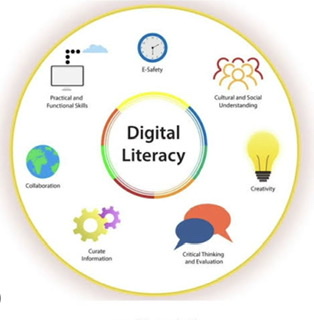Digital literacy means having the skills you need to live, learn, and work in a society where communication and access to information is increasingly through digital technologies like internet platforms, social media, and mobile devices.
Digital literacy refers to someone's ability to use IT and digital technology to find, evaluate, create and communicate information.
Being digitally literate means understanding how to use technology and the internet competently and safely.
4 types of Digital Literacy
Information literacy
Visual literacy
Media literacy
Metaliteracy
Importance of Digital Literacy to Learners
- Students with digital literacy skills will be more comfortable and confident.
- Getting your kids familiar with technology will help build them their confidence and aid them learn better in any field.
- Teaching digital literacy to your children will help them successfully navigate the complicated world of technology.
- It helps in getting a sense of how to protect children against digital risks in future.
- Using digital literacy in the classroom teaches students effective strategies for finding credible information.
- Digital literacy and digital citizenship help children to be more responsible online.
OUTCOMES OF DIGITAL LITERACY
Learners will be able to: • Select and/or use productivity tools (e.g., word processing, presentation and spreadsheet applications) effectively. Select and/or use communications tools (e.g., text-based, audio and video) effectively. Select and/or use collaboration tools (e.g., conferencing and cloud-based) effectively.
